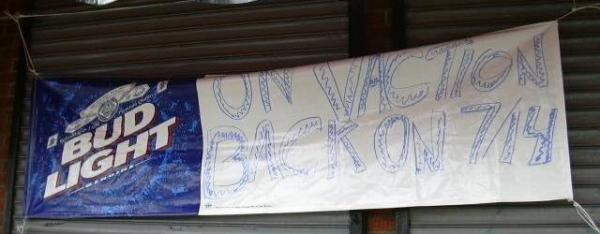What Do Elmo, Chris Brown, and Susan Neuman Have In Common?
Blog Post
Aug. 17, 2008
We can't stop smiling at this Sesame Street clip featuring Elmo and Chris Brown--and not just because of the mad dance skilz Elmo displays between verses.
In these middle income neighborhoods, children had a variety of opportunities to gain an understanding of the purposes and processes of reading, of connecting print with meaningful activity. In the lower income neighborhoods, such opportunities were far more limited and narrow in scope. In these communities, signs were often made inaccessible to children who might pretend to read them.
Elmo's New York City neighborhood has gentrified significantly since Sesame Street first aired in 1969, so the little red guy has plentiful access to books, libraries, and high-quality signage to help him develop print awareness. But too many of the children who most need support for early literacy development live in communities where signs look more like this:

And we've certainly seen our fair share of "creative" spellings at carry-outs in some Washington, D.C., neighborhoods. All just another example of how disadvantaged children persistently get less support for literacy from all kinds of sources, causing them to arrive in school at a tremendous disadvantaged vis a vis their peers from more affluent backgrounds. That's also why high-quality early education programs with a strong focus on language and emerging literacy development are essential to narrow achievement gaps.
We also hope Chris Brown's example will encourage more parents and adults in children's lives to point out print signage--whatever its quality--to children, to read and discuss signs with them, and to encourage children to make their own attempts at sign-reading.
Sign image courtest of this sad, but sometimes amusing, website that collects images of misspelled signs in the New York City area.